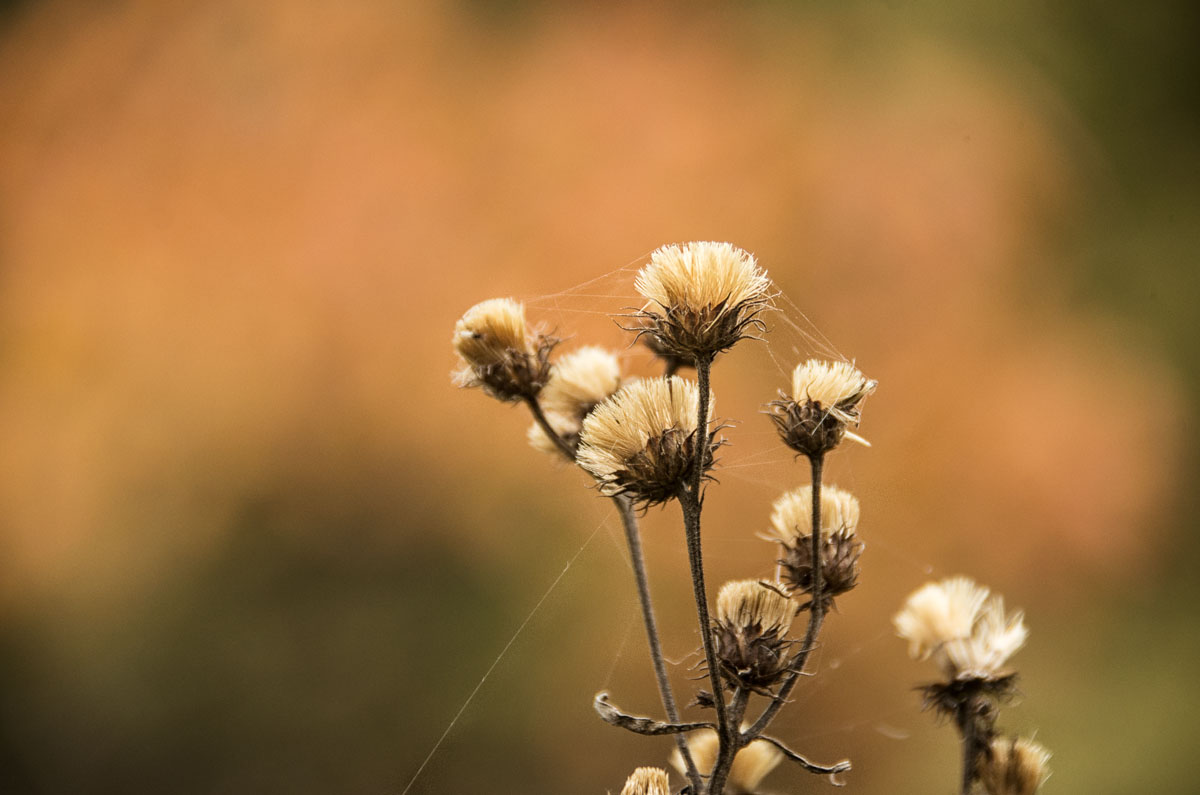No. 44. King’s Wand After the Fall

Mike Slater, a regular nature columnist in the Reading Eagle’s Berks County supplement recently wrote this column about one of my favorite meadow plants, Ironweed. He proposed changing its name.
Outside: Ironweed is a beautiful plant with an ugly name
Wednesday October 19, 2016 12:01 AM
Let’s get rid of the word “weed” in native plant names. Since every plant species is native and belongs somewhere, no plant is intrinsically a weed, despite what our ancestors who named them thought. Most plants can get weedy where their needs are perfectly met.
Weeds are just plants growing where we don’t want them to grow. We can learn to live with them or we can fight them.
Take ironweed, one of my favorite fall blooming meadow plants. This beautiful wildflower is attractive to butterflies and bees and deserves a better name. The iron part is OK, as it has tough stems and roots, but to me it isn’t a weed.
We have three species native to Pennsylvania, and all look similar. Most common is New York ironweed (Vernonia noveboracensis), which is found in moist meadows and fields throughout the southern tier of the state. It can grow to a height of 6 feet.
Tawny ironweed (Vernonia glauca) likes drier fields and is found only in the very southeastern corner of the state near Philadelphia. It is a little shorter, growing to 5 feet tall.
Tall ironweed (Vernonia gigantea) is common in western Pennsylvania. This one likes moist soils and can grow up to 10 feet tall. Its Latin name, gigantea, fits it very well. They all have beautiful heads of deep-purple, fuzzy flowers that are quite showy, even though they lack the petallike flowers that their cousins the asters and sunflowers have.
We could rename these gorgeous plants by eliminating “weed” from the name and call them “iron stem” or “iron root.” However, my preference would be to name them for the flower’s color, such as “purple rod” or “king’s wand,” since purple is a royal color. Does anyone have other suggestions? I’m sure you all can come up with something better.
My wife and I like to grow ironweeds in our meadow garden, but they are a little big for some people’s small gardens. Fortunately, if you cut them back by half in early summer, say about July 4, they will stay shorter than normal and bloom more vigorously.
If you want a very short version of these great purple flowers, the dwarf form of the Ozark ironweed (Vernonia lettermanii), called “iron butterfly,” is very nice. It grows to one to 2 feet and has nice purple flowers that are equally attractive to butterflies.
My friends Mark Priebe and Karin Wulkowicz gave us several of these little plants this last year, and they did very well attracting butterflies in September, even without any extra water during the drought.
I guess my threshold for what plants qualify as weeds is lower than most peoples’. I like the common definition of a weed as “a plant that’s growing where it isn’t wanted.” Additionally, the weediest plants are non-native invasive species that don’t belong in our woods and fields at all.
At the other end of the spectrum are people who consider any plant they didn’t plant a weed. Unfortunately, power mowers and weed trimmers make it all to easy to chop down plants like ironweed without considering their beauty and utility for supporting populations of pollinating insects. Since I love nature’s bouquets, to me ironweeds are definitely wanted. The pollinators they attract make them indispensable in our garden, and purple is my favorite color too.
Mike Slater is president of the Baird Ornithological Club and a member of the Mengel Natural History Society of Berks County and the Muhlenberg Botanic Society of Lancaster. He lives in Brecknock Township. Reach him at paplantings@gmail.com.
